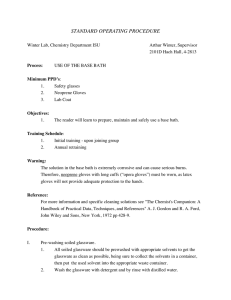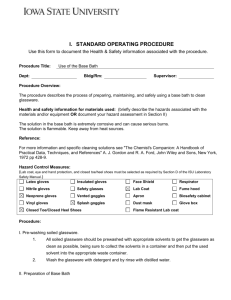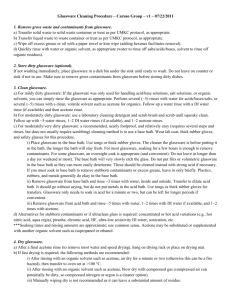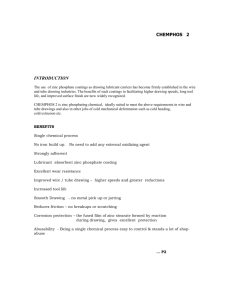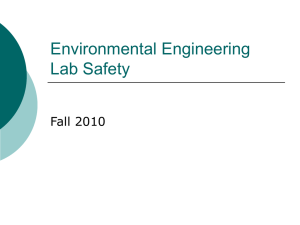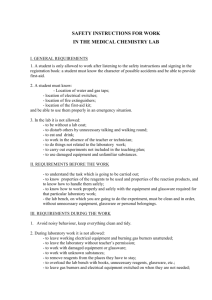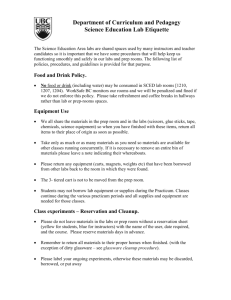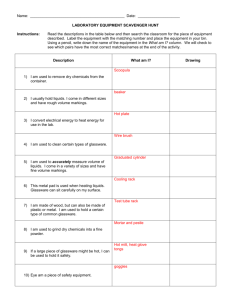Chamberland SOP Working with a Base Bath
advertisement
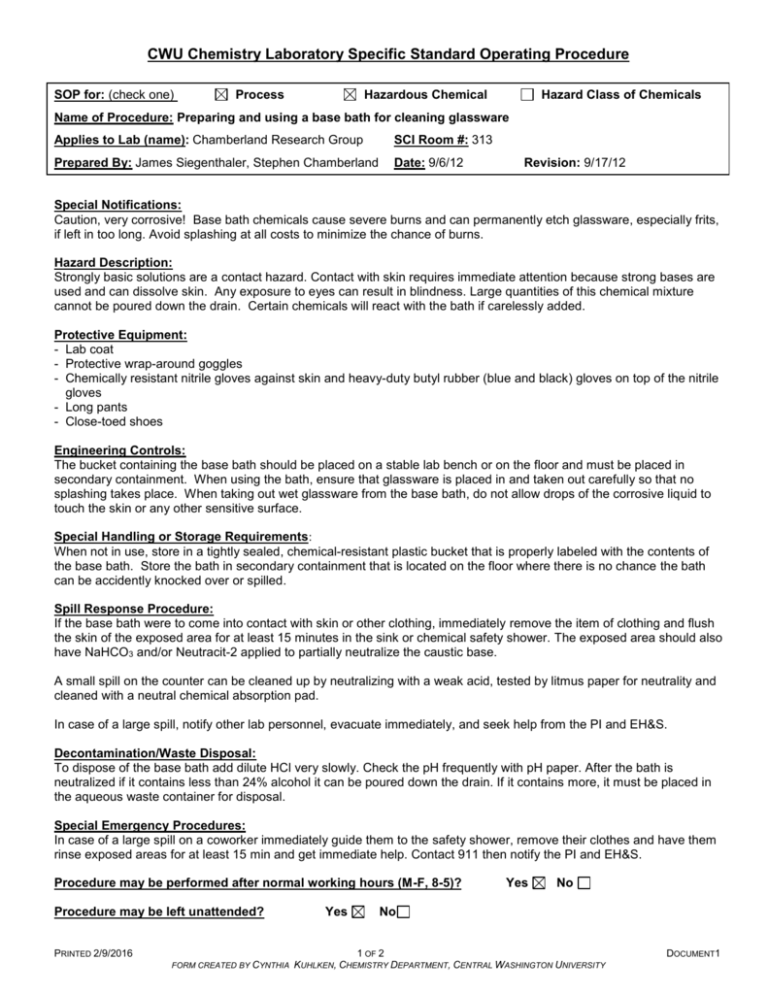
CWU Chemistry Laboratory Specific Standard Operating Procedure SOP for: (check one) Process Hazardous Chemical Hazard Class of Chemicals Name of Procedure: Preparing and using a base bath for cleaning glassware Applies to Lab (name): Chamberland Research Group SCI Room #: 313 Prepared By: James Siegenthaler, Stephen Chamberland Date: 9/6/12 Revision: 9/17/12 Special Notifications: Caution, very corrosive! Base bath chemicals cause severe burns and can permanently etch glassware, especially frits, if left in too long. Avoid splashing at all costs to minimize the chance of burns. Hazard Description: Strongly basic solutions are a contact hazard. Contact with skin requires immediate attention because strong bases are used and can dissolve skin. Any exposure to eyes can result in blindness. Large quantities of this chemical mixture cannot be poured down the drain. Certain chemicals will react with the bath if carelessly added. Protective Equipment: - Lab coat - Protective wrap-around goggles - Chemically resistant nitrile gloves against skin and heavy-duty butyl rubber (blue and black) gloves on top of the nitrile gloves - Long pants - Close-toed shoes Engineering Controls: The bucket containing the base bath should be placed on a stable lab bench or on the floor and must be placed in secondary containment. When using the bath, ensure that glassware is placed in and taken out carefully so that no splashing takes place. When taking out wet glassware from the base bath, do not allow drops of the corrosive liquid to touch the skin or any other sensitive surface. Special Handling or Storage Requirements: When not in use, store in a tightly sealed, chemical-resistant plastic bucket that is properly labeled with the contents of the base bath. Store the bath in secondary containment that is located on the floor where there is no chance the bath can be accidently knocked over or spilled. Spill Response Procedure: If the base bath were to come into contact with skin or other clothing, immediately remove the item of clothing and flush the skin of the exposed area for at least 15 minutes in the sink or chemical safety shower. The exposed area should also have NaHCO3 and/or Neutracit-2 applied to partially neutralize the caustic base. A small spill on the counter can be cleaned up by neutralizing with a weak acid, tested by litmus paper for neutrality and cleaned with a neutral chemical absorption pad. In case of a large spill, notify other lab personnel, evacuate immediately, and seek help from the PI and EH&S. Decontamination/Waste Disposal: To dispose of the base bath add dilute HCl very slowly. Check the pH frequently with pH paper. After the bath is neutralized if it contains less than 24% alcohol it can be poured down the drain. If it contains more, it must be placed in the aqueous waste container for disposal. Special Emergency Procedures: In case of a large spill on a coworker immediately guide them to the safety shower, remove their clothes and have them rinse exposed areas for at least 15 min and get immediate help. Contact 911 then notify the PI and EH&S. Procedure may be performed after normal working hours (M-F, 8-5)? Procedure may be left unattended? PRINTED 2/9/2016 FORM CREATED BY CYNTHIA Yes Yes No No 1 OF 2 KUHLKEN, CHEMISTRY DEPARTMENT, CENTRAL WASHINGTON UNIVERSITY DOCUMENT1 CWU Chemistry Laboratory Specific Standard Operating Procedure Step by Step Procedure: 1. Pre-washing soiled glassware: a. All dirty glassware should first be washed following the normal glassware cleaning procedures. i. First rinse with acetone and dispose of the rinsing as organic waste. ii. Wash with hot water and detergent. iii. Rinse with cold tap water. iv. Rinse with cold DI water. v. Rinse with acetone. vi. Rinse with dichloromethane. b. The base bath is usually used to remove materials that cannot be removed by conventional cleaning. 2. Preparing the Base Bath: a. Dissolve 200-300 g of KOH into 1 L of distilled H2O in a bucket designed for base baths. b. Slowly add to the solution, 4 L of isopropyl alcohol, avoiding any splashes. c. Replace the bucket lid and allow the solution to mix fully overnight. 3. Cleaning Glassware: a. Before using, ensure that your gloves are in good condition, if there is any doubt, replace them. b. While wearing all the above-specified PPE, cleaning of the glassware can begin. c. Gently lower glassware that has been prewashed into the base bath allowing the solution to completely fill the glassware. Watch for splashing as liquid enters and displaces the air in the container. d. Allow the glassware to remain in the solution for several hours or overnight, but not much longer. e. While wearing all the above described PPE, remove the glassware from the base bath with tongs or two pairs of gloves (first layer: nitrile, second layer: butyl rubber) allowing as much of the solution to drain out as possible into the bucket. f. Rinse the residual base from the glassware with warm tap water, then rinse with DI water. g. Optional step (not usually done): Place glassware in a dilute ~4-6 M HCl bath and leave for at least 30 minutes. This neutralizes any residual base. Remove the glassware with tongs and let the excess HCl drip back into the bath. Rinse again several times with DI water. h. Rinse with acetone and placed on racks or in the oven to dry (only place in the oven after acetone has evaporated). i. Glassware should appear spot free, crystal clear and sparkling clean. Approved By (PI) : Stephen Chamberland, Ph.D. Date: 9/6/12 PI Signature: ___________________________________________________ Date: ______________ EH&S Signature: ________________________________________________ Date: ______________ PRINTED 2/9/2016 FORM CREATED BY CYNTHIA 2 OF 2 KUHLKEN, CHEMISTRY DEPARTMENT, CENTRAL WASHINGTON UNIVERSITY DOCUMENT1
